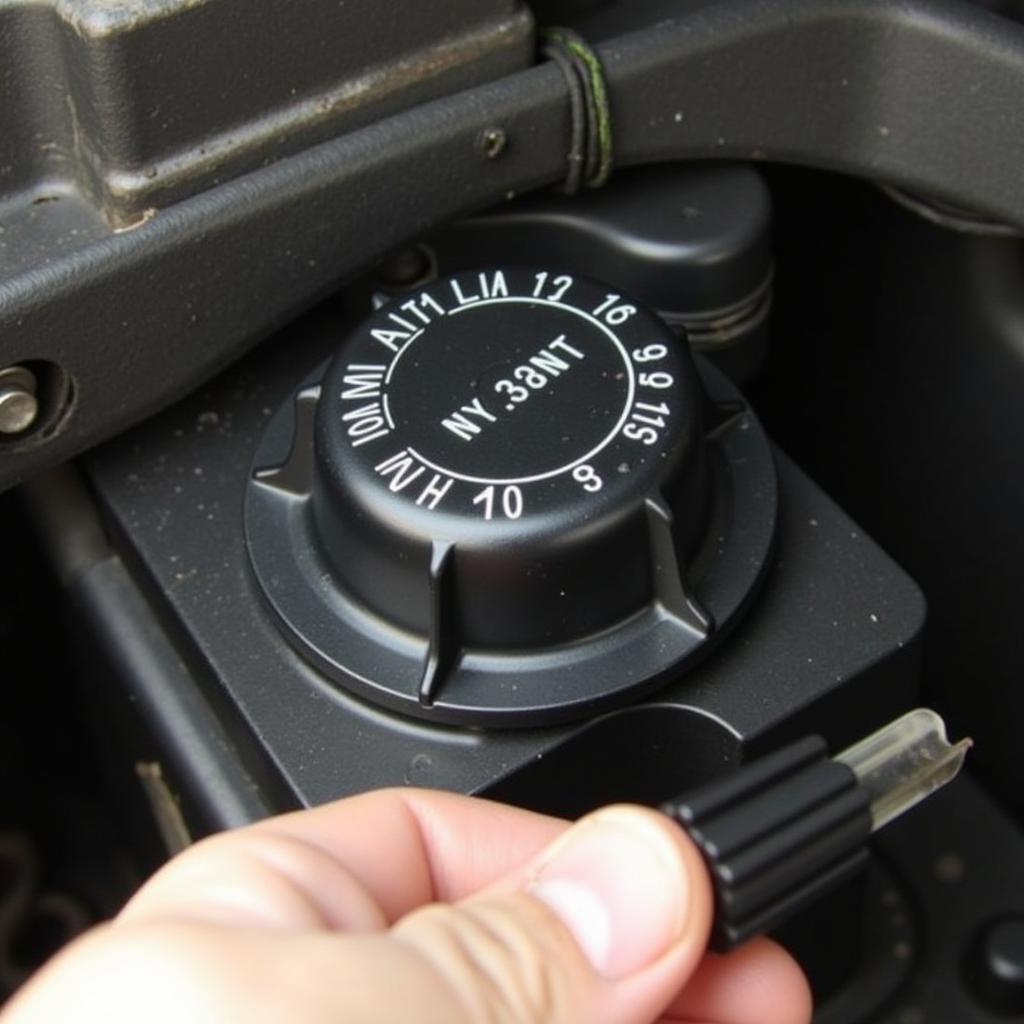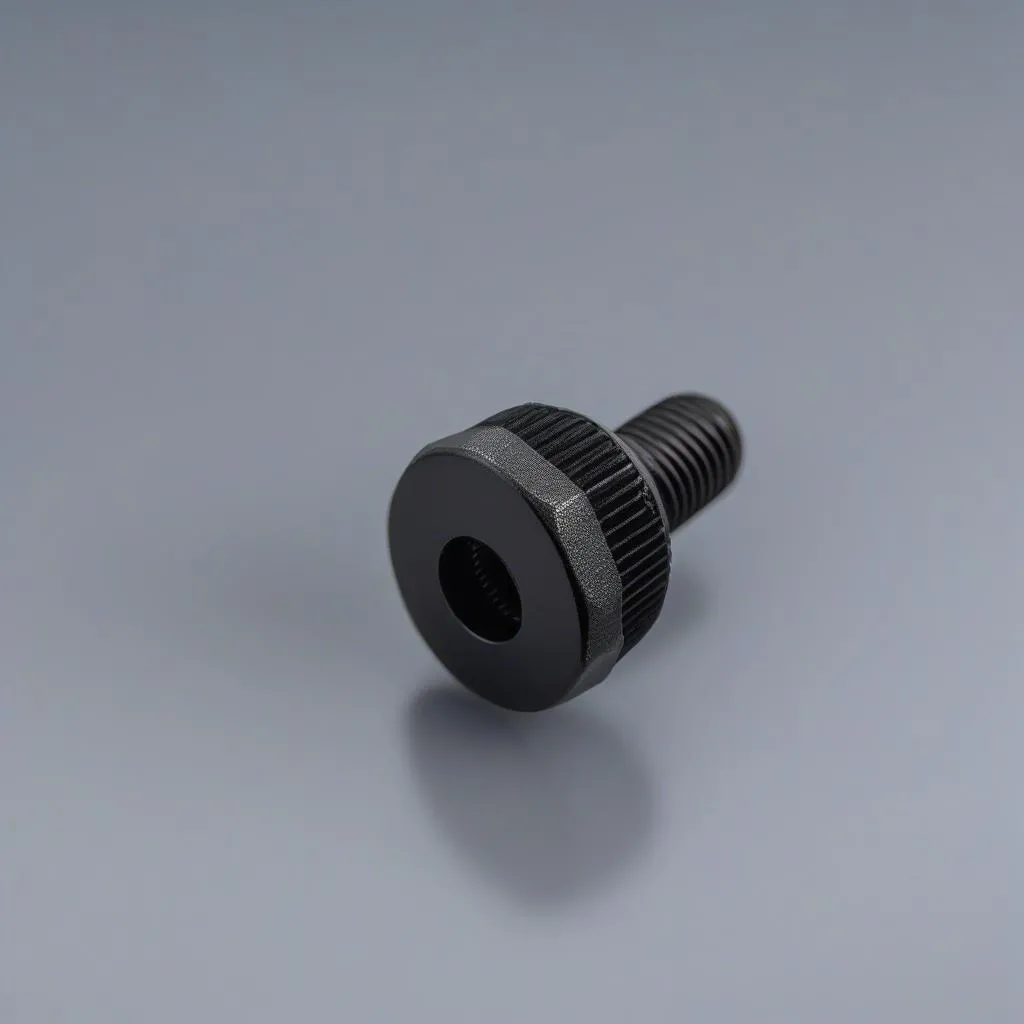Experiencing a flashing brake warning light in your 1989 GMC Sierra? This can be a nerve-wracking situation, but understanding the potential causes and solutions can help you address the issue safely and efficiently. While this guide provides valuable information, always remember that consulting a qualified mechanic is crucial for a thorough diagnosis and repair.
Understanding Your Brake Warning Light
The brake warning light on your dashboard is designed to alert you to potential problems within your braking system. While a steady illuminated light usually indicates low brake fluid, a flashing light typically signals a more serious issue.
Common Causes of a Flashing Brake Warning Light in a 1989 GMC Sierra
Several factors can cause your 1989 GMC Sierra’s brake warning light to flash:
1. Low Brake Fluid Level:
This is the most common cause. Low brake fluid can be due to a leak in the system or worn brake pads.
2. Faulty ABS System:
If your Sierra is equipped with an Anti-lock Braking System (ABS), a flashing light may indicate a problem with a wheel speed sensor, ABS module, or related wiring.
3. Worn Brake Pads:
Most brake pads are equipped with wear indicators that trigger the warning light when they reach a certain level of wear.
4. Malfunctioning Parking Brake:
If the parking brake is not fully released or there’s an issue with the parking brake switch, it can cause the warning light to flash.
5. Electrical Issues:
A short circuit or faulty wiring in the brake light system can also trigger the warning light.
 1989 GMC Sierra Brake Fluid Reservoir
1989 GMC Sierra Brake Fluid Reservoir
Diagnosing the Problem
Before taking your Sierra to a mechanic, there are a few checks you can perform yourself:
-
Check the Brake Fluid Level: Park your truck on a level surface, open the hood, and locate the brake fluid reservoir. The reservoir will typically have “DOT 3” or “DOT 4” printed on the cap. Check the fluid level, ensuring it falls between the minimum and maximum lines.
-
Inspect for Leaks: Carefully examine the area around the master cylinder, brake lines, and calipers for any signs of fluid leakage.
-
Check the Parking Brake: Ensure the parking brake is fully disengaged.
What to Do When the Brake Warning Light Flashes
If you notice the brake warning light flashing while driving:
-
Pull over safely: Find a safe location to pull over as soon as possible.
-
Turn off the engine and assess: Check the brake fluid level and look for any obvious signs of leakage.
-
Call for assistance: If the brake fluid level is low or you suspect a leak, do not attempt to drive the vehicle. Call a tow truck to transport your Sierra to a trusted mechanic.
“Ignoring a flashing brake warning light can have dangerous consequences,” warns veteran mechanic John Miller, who has over 30 years of experience working on GMC trucks. “A malfunctioning brake system significantly increases the risk of accidents. Always prioritize safety and seek professional help.”
Remote Diagnostic and Programming Services
In today’s technologically advanced world, remote diagnostic and programming services offer a convenient and efficient way to diagnose and address certain automotive issues. By connecting your vehicle’s onboard computer to a remote technician, they can access real-time data, identify fault codes, and even perform software updates or programming modifications.
While this technology has come a long way, it is essential to note that not all brake issues can be diagnosed or repaired remotely. Severe mechanical failures or fluid leaks still require hands-on inspection and repair by a qualified mechanic.
Conclusion
A flashing brake warning light in your 1989 GMC Sierra should never be ignored. While it might be tempting to delay repairs, addressing the issue promptly is crucial for your safety and the well-being of others on the road. By understanding the potential causes and following the recommended steps, you can ensure the problem is resolved effectively. Remember, when in doubt, consult a qualified mechanic for a thorough inspection and professional repair.

